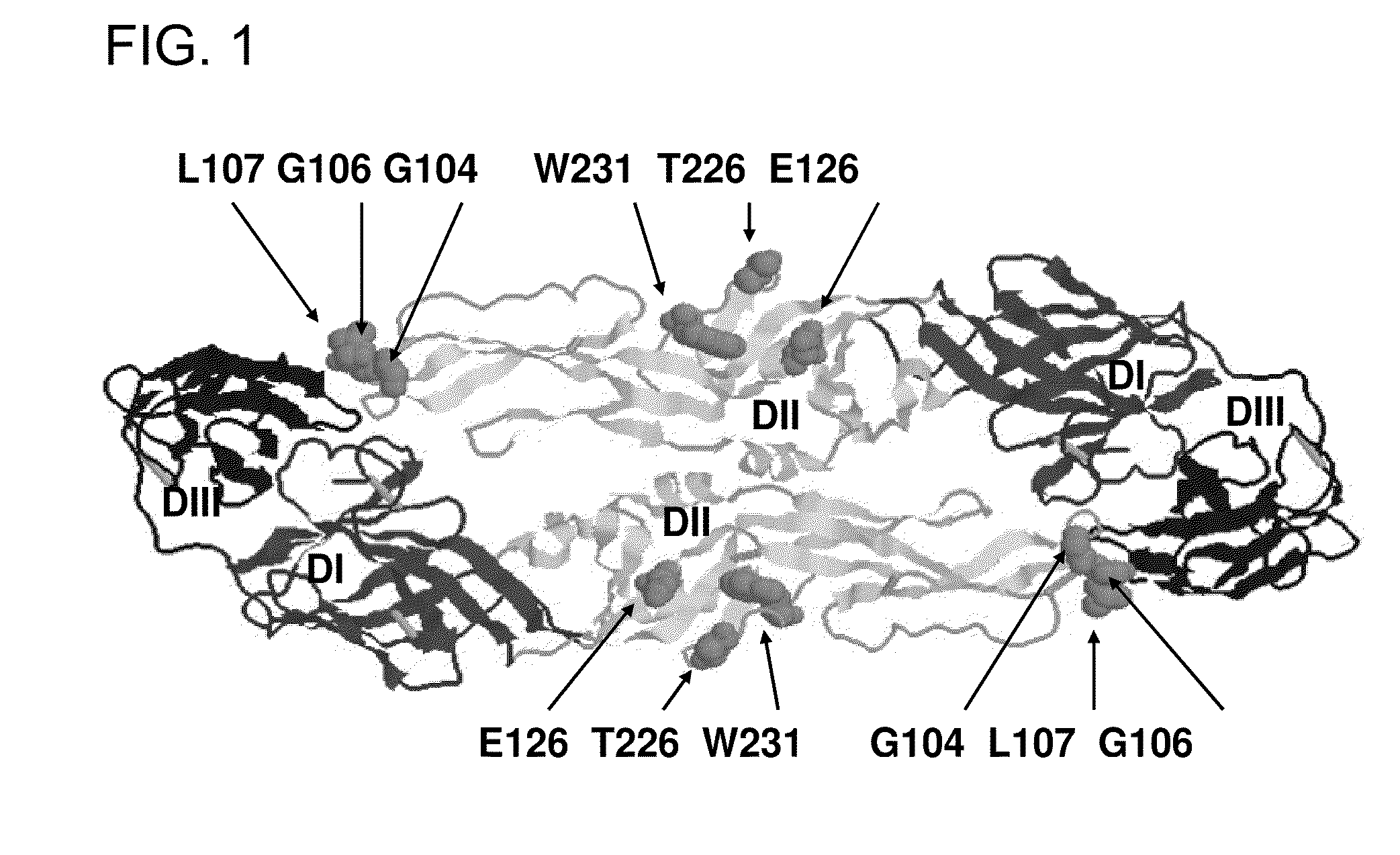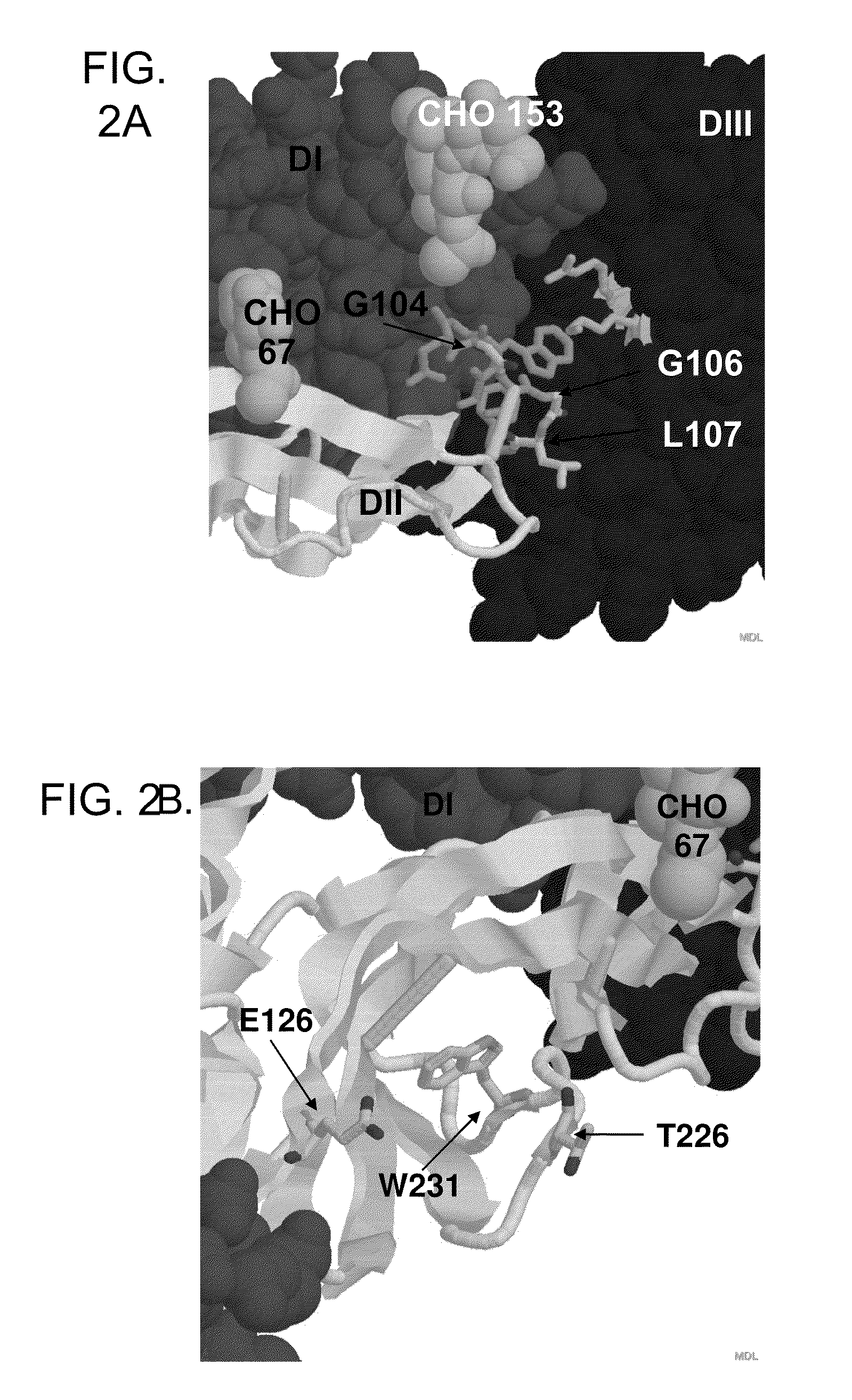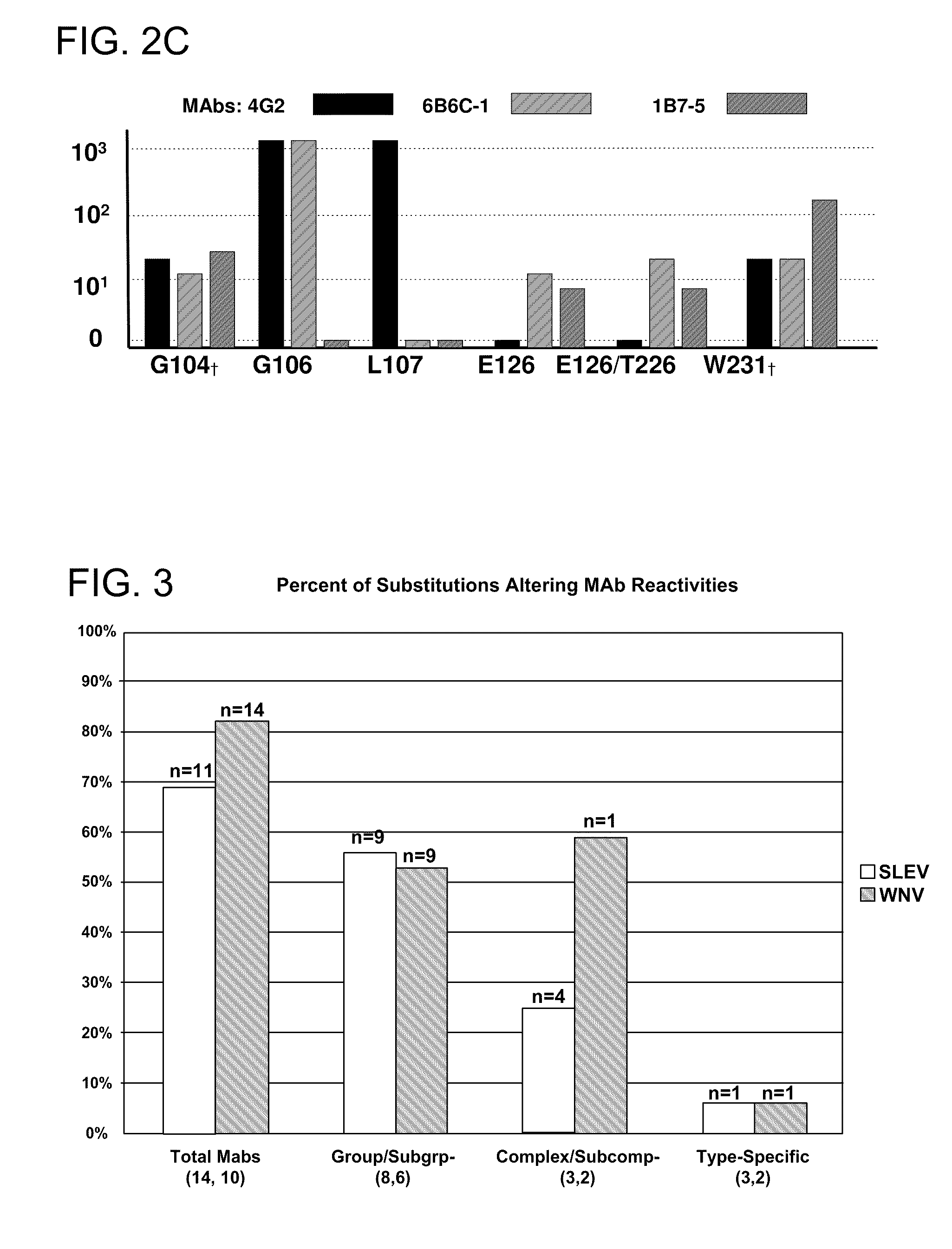Localization and characterization of flavivirus envelope glycoprotein cross-reactive epitopes and methods for their use
a technology of envelope glycoprotein and localization, applied in the field of localization and characterization of envelope glycoprotein cross-reactive epitopes, can solve the problems of unable to obtain definitive epidemiological information, difficult serodiagnosis of secondary flavivirus infections, viruses, etc., and achieve the effect of reducing or ablating cross-reactivity
- Summary
- Abstract
- Description
- Claims
- Application Information
AI Technical Summary
Benefits of technology
Problems solved by technology
Method used
Image
Examples
example 1
Identification of DII Cross-Reactive Epitope Residues
[0169]This example demonstrates the identification of flavivirus cross-reactive epitopes using a structure-based rational mutagenesis method.
Cell Culture, Virus Strain and Recombinant Plasmid
[0170]COS-1 cells (ATCC CRL 1650; Manassas, Va.) were grown at 37° C. with 5% CO2 on Dulbecco's modified Eagle's minimal essential medium (DMEM, GIBCO, Grand Island, N.Y.) supplemented with 10% heat-inactivated fetal bovine serum (FBS, Hyclone Laboratories, Inc., Logan, Utah), 110 mg / l sodium pyruvate, 0.1 mM nonessential amino acids, 2 mM L-glutamine, 20 ml / l 7.5% NaHCO3, 100 U / ml penicillin, and 100 μg / ml streptomycin. CHO cells (ATCC CCL 61; Manassas, Va.) were grown under the same conditions as COS-1 cells with DMEM / F12 nutrient mixture (GIBCO, Grand Island, N.Y.).
[0171]Flavivirus plasmids capable of expressing extracellular VLPs composed of prM / M and E-glycoproteins for JE, WN, SLE, and the four DEN virus serotypes have been constructed (...
example 2
Identification of Additional Cross-Reactive Epitopes Through Nearest Neighbor Search
[0188]This example demonstrates the identification of additional cross-reactive epitopes using a “nearest neighbor” search.
[0189]Following the identification of cross-reactive epitope residues G106 and W231 (DEN-2 numbering), the E-glycoprotein atomic structure was reexamined to search for additional flavivirus cross-reactive epitope residues. A “nearest neighbor” search was conducted of the surface of the E-glycoprotein structure, looking for additional residues located within 10-15 Å of the identified residue. This distance is within the binding footprint of a single antibody paratope (Faebler et al., J. Mol. Biol. 313:83-97, 2001). In this second iteration of cross-reactive epitope residue identification the same five optimality criterion as above were used, with one change. The criterion of strict conservation across the flaviviruses was relaxed to now include variable residues. In this way, resi...
example 3
Spatial Characterization and Organization of Flavivirus Group-Reactive Epitope Residues
[0198]This example describes the spatial characterization and organization of exemplary flavivirus cross-reactive epitope residues.
[0199]The six residues (G104, G106, L107, E126, T226, and W231) identified as participating in the flavivirus cross-reactive epitopes are spatially arranged on the DEN-2 virus E-glycoprotein surface in two clusters (FIG. 1). The most prominent grouping of these residues is the clustering of three residues from the highly conserved fusion peptide region of DII (Allison et al., J. Virol. 75:4268-75, 2001). These residues, Gly104, Gly106, and Leu107, are almost completely conserved across the flaviviruses (Table 4).
[0200]The cross-reactive mAbs most strongly affected by substitutions in this region were 4G2 and 6B6C-1. These two mAbs are considered to be quite similar; both are flavivirus group-reactive and have been grouped into the A 1 epitope of the E-glycoprotein (Gen...
PUM
| Property | Measurement | Unit |
|---|---|---|
| angle | aaaaa | aaaaa |
| concentration | aaaaa | aaaaa |
| pH | aaaaa | aaaaa |
Abstract
Description
Claims
Application Information
 Login to View More
Login to View More - R&D
- Intellectual Property
- Life Sciences
- Materials
- Tech Scout
- Unparalleled Data Quality
- Higher Quality Content
- 60% Fewer Hallucinations
Browse by: Latest US Patents, China's latest patents, Technical Efficacy Thesaurus, Application Domain, Technology Topic, Popular Technical Reports.
© 2025 PatSnap. All rights reserved.Legal|Privacy policy|Modern Slavery Act Transparency Statement|Sitemap|About US| Contact US: help@patsnap.com



